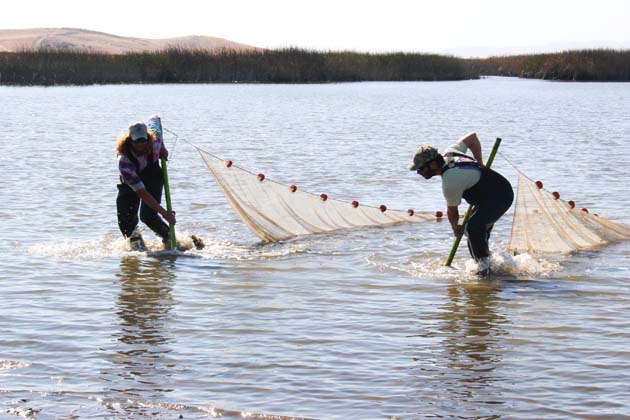wo researchers toss a long loop of net over the stern of a boat chugging slowly through Suisun Marsh, the extensive brackish wetland system south of Fairfield. The wet slap of rope on metal echoes against a bank of reeds as the trawl net is tugged down by the water, opening into a billowing mouth scooping up any fish in its path.
There are a few minutes of stillness while the net does its work. One scientist checks her cell phone; redwing blackbirds rasp their shrill call from the reeds; a startled egret rises and flaps away up the brackish slough. Then captain Brian Williamson ends the trawl and UC Davis researcher Jacob Montgomery and California Fish and Wildlife biologist Melissa Riley spring into action, quickly hauling the net in hand over hand so no fish have time to escape. The catch is dumped into a large tub full of water, and each fish is identified, measured, and released.
“Climate Change: Dispatches from the Home Front” is a series of articles highlighting groundbreaking work being done by Bay Area institutions, agencies and nonprofit groups to comprehend, mitigate, and adapt to the impact of climate change on Bay Area ecosystems. The series is a partnership with the Bay Area Ecosystems Climate Change Consortium. More at baynature.org/climatechange.
Scientists have been conducting surveys in Suisun Marsh every month for over three decades, tracking the fluctuations of species in the marsh. It was this ongoing survey, spearheaded by Dr. Peter Moyle of UC Davis, that helped reveal the precipitous decline in the delta smelt population in the 1980s.
And now, Moyle predicts that surveys such as this one will reveal even greater changes in coming decades — not only here in Suisun Marsh, but all across the state. The culprit? Climate change. An estimated 82 percent of California’s 129 native fish species have been deemed highly likely to dwindle in number — or go extinct — as a result of climate change over the next century, according to a recent article Moyle coauthored that appeared last May in the online journal PLoS One.
“There is already a general decline in native fishes — which is why climate change is such a problem,” Moyle says. “It accelerates the decline that’s already going on.”
The research that Moyle started decades ago now has a dual purpose: It offers evidence for the free fall, but it also may ultimately contribute to one of the best opportunities to soften this decline.

Feeling the heat
Trapped in their streams, fish are under more pressure from climate change than many other groups of organisms. Not only are most fish restricted to the particular water body they were hatched in, but their ability to move upstream or downstream in response to changing conditions has been constrained by dams, erosion, and other human-caused obstacles.
“Vegetation communities can move, birds can move,” Moyle says. “But the fish really can’t move; they are pretty much stuck where they are.”
Under the Intergovernmental Panel on Climate Change’s highest emissions scenario, climate models predict a seven-degree increase in air temperature by the end of the 21st century, says Rebecca Quinones, a co-author of the study. As a result, there are many predicted changes coming down the pike for the fish to cope with. One of the biggest is warmer water temperatures, which kill or weaken the many species that have adapted to living in cooler water temperatures. The droughts that are expected to become more numerous compound the problem,
as stream waters get even hotter than usual — or dry up entirely. “We estimate that we will lose 57 to 99 percent of cold water habitat,” Quinones says. “Fish that can migrate will shift their distribution northward, but most rivers have barriers on them so even those fish that could move won’t necessarily be able to.”
What’s more, winter storms and flooding are also expected to become more intense as weather becomes more variable. These events scour streams, destroying habitat and clouding the water with gill-clogging runoff. And the vibrant estuarine nursery habitat of mudflat and reeds will be eroded, as the zone between human development and rising water levels shrinks.
While such forecasts are bleak, researchers at UC Davis’ Center for Watershed Sciences aren’t just throwing up their hands and walking away. As climate change stresses all species, and as we try to do more with increasingly limited resources, it becomes ever more important to know the specifics of fishes’ habits and preferences. If blanket ecosystem-level protection is not an option, the best hope for the fish is to deploy those scarce resources where they can deliver the most bang for the buck.
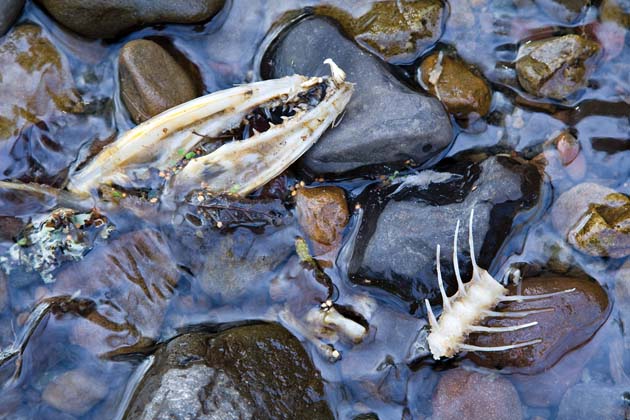
Knowledge is power
For Moyle and Quinones — and many other researchers — the same careful documentation and massive database that enabled them to predict the damage in the first place offers unprecedented insight into how we might design more effective conservation strategies.
This type of planning is innovative for several reasons, Quinones says. First is simply the ambitious scope of developing a statewide database of all species and their habitat needs. Second is the attempt to actually apply the knowledge to practical solutions.
To nurture step two, the Center for Watershed Sciences (CWS) has secured additional funding from a coalition of environmental groups to plan conservation strategies for California and beyond. Quinones recently finished a project as a postdoctoral researcher at the Technische Universität München in Germany to compare California and Bavarian watersheds. Both areas have similar ranges of habitat and similar fish assemblages (including salmon and whitefish), and both pose similar challenges (including dams, introduced species, and climate change). So even though many of California’s natives have never made it out of their own local creeks, their woes reflect issues found around the world.
In California, salmon “strongholds” are one conservation measure being considered by the cws team. The basic idea, which has been around for over a decade, is that areas with particularly robust populations should also receive priority for conservation, instead of those with already threatened populations that may have little chance of survival. If the worst happens, the theory goes, at least the stronghold populations can act as living seed banks for the future.
Expanding on this concept, the team at the Center for Watershed Sciences is now looking for areas that are overall biodiversity strongholds — in other words, places where other fish species, not just salmon, can thrive. And they are making sure that climate factors are part of their evaluation. “Ultimately, we want to identify not only where protected areas should be, but also how those habitats may shift in the future,” Quinones says. “You may not be protecting the areas you need to if you are just looking at the context of what you have right now on the landscape.”
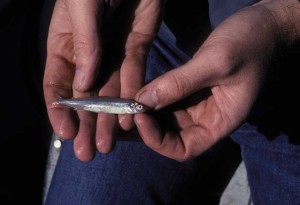
The imperiled
While the impact of climate change can seem abstract, it becomes very tangible out on Suisun Marsh, watching the researchers haul in net after net full of fish. From the diminutive three-spined stickleback, with its lightly speckled sides and perpetual pout, to the silver, bullet-shaped Sacramento splittail, it is hard to imagine losing any one of these unique species.
Yet according to the report, 100 of California’s native fish are highly vulnerable to climate change. This includes all salmon and steelhead species, as well as the less-charismatic yet highly publicized delta smelt and many lesser known fish — each of which is valuable in its own way, even if it lives its life well away from the public eye.
For example, no one might miss the Red Hills roach, says Peter Moyle. This minnow only grows to be a few inches long; it’s mostly brown, though the tips of its fins blush red during breeding season. Yet this plain little fish is one of the only vertebrates known to be confined to streams bordered by California’s iconic serpentine soils; it lives in only a few small streams that pass through the harsh and nearly barren environment created by deposits of this magnesium-rich soil.
The forearm-length Pacific lamprey also might not be missed — this eel-like fish was a beloved food of native Californians but has fallen from popular favor due to its bony body, disturbingly toothy suction-cup maw, and habit of sucking the blood, flesh, and fluid from salmon and other prey. Yet despite this grisly resumé, lampreys are an important part of the food chain. Their prey generally survives, and their young are filter-feeders that spend up to six years living in the gravel riverbed, cleaning the water of algae and other tiny particles, before they migrate to the ocean like salmon. And like salmon, they serve as a nutrient conveyor belt—the diminutive four-inch-long young go out to sea, bulk up on protein-packed marine life, and after several years return upstream to spawn, die, and fertilize the inland ecosystem with all those nutrients that otherwise would have remained at sea.
A more widely mourned loss might be the green sturgeon, a dinosaur-like fish that was popular for sportfishing until it was listed as threatened by the federal government in 2006. This massive yet secretive fish can live 70 years and grow to more than eight feet long. It is sometimes called a living fossil, as it and other sturgeon have remained largely unchanged for the last 200 million years. Yet because the green sturgeon both produces few young and depends on cold inland water to spawn and rear its young, it is highly vulnerable to climate change. And because it lives so long, it could stop reproducing and effectively be extinct before anyone would notice.
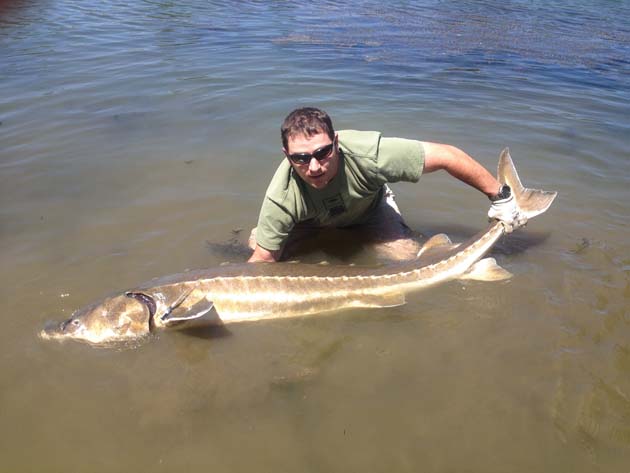
Natives vs. alien
Another serious challenge already facing our native fish is the rise of nonnative species introduced into California waters either intentionally for sportfishing or accidentally through negligence. According to Moyle, the suite of native fishes found in California is a distinctive one containing a very large number of endemic species, that is, species that live only here. But this diversity is threatened if his predictions pan out — because nearly all native species would fare poorly in a changing climate, while nonnatives are not expected to suffer as much as the climate changes. Why? Most Californian species evolved to fit a narrow range of conditions particular to our unique Mediterranean climate. Conversely, the nonnatives tend to be generalists with the flexibility to adapt to diverse living conditions; this is why they have been able to thrive here in the first place. Making matters worse, the newcomers are generally better adapted to warm, quiet waters of the type that humans have already created across the landscape, and which will become increasingly common due to climate change.
“Our aquatic ecosystems will become much less like what they were historically and more like what they are everywhere else in America,” Moyle says. “We’ll become boring.”
For example, the largemouth bass, originally brought into the state from the Midwest and currently found in the drinking-water reservoirs of Marin County, would likely expand into nearby waterways that support a fragile coho salmon population, says Marin Municipal Water District biologist Eric Ettlinger.
“When the reservoirs are full in the wintertime, some of those fish spill out of the reservoirs and into the creek,” he says. “Right now the bass don’t survive because the creek water is too cold for them — but if the creek is warmer, they probably will.”
Of course, not all parts of the Bay Area will be affected in the same way. For example, climate models are ambiguous about how coastal areas such as Marin County will be affected, Ettlinger says. “In fog-dominated areas,” he says, “we may actually get cooling with climate change, so if we get more fog, we’re going to get cooler summers, and that would be good for the salmon and other native fish.”
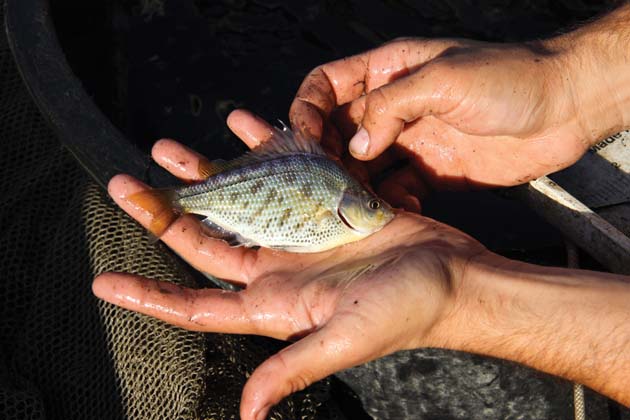
Knowledge meets local conditions
The Center for Watershed Sciences’ conservation planning hinges on details of local climate, habitat, and other site-specific conditions. For example, the fish database is being used to recommend changes in the management of dams, such as altering the timing and size of water releases from some of the state’s 1,400 major dams.
“The whole idea is to re-operate dams to make the flow regimes more favorable,” Moyle says. “This is one of the ways to provide better habitat for fish statewide, especially in the face of climate change.”
The changes being suggested wouldn’t significantly reduce the amount of water available to homes, farms, and habitats farther downstream, Moyle says; but by taking into account the details, the proposed changes could make the rivers much more favorable to fish in the long run.
“We aren’t just saying ‘We want more water in the rivers,’ but ‘We want more water in this stretch of river at this time of year to benefit these species,’” Quinones says.
And those biodiversity strongholds? By matching up the details of climate modeling and the fish database, scientists can more accurately identify creeks likely to stay cool and support salmon over the next 50 or 100 years.
Other aspects of the project include looking at ways to enhance connectivity among waterways and habitat types, researching what scale of restoration is most effective, and determining which areas are likely to be most resilient as the climate changes. Once the research has been completed, the team will begin an outreach phase, sharing its results with land managers and decision-makers who have the power to implement change.
Quinones says she’s energized by the possibilities, despite the project’s grim predictions. “Sometimes you get these predictions and you wonder how the fish are ever going to survive — so really linking that to how it can be applied on the ground is pretty innovative,” she says. “To me that is the exciting part.”
Jacoba Charles is a freelance journalist based in the North Bay. Her work has appeared in the New York Times, the Point Reyes Light, Bay Nature, and on Salon.com.

